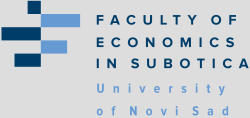The Potential of Crowdfunding for Cultural Heritage Protection
DOI:
https://doi.org/10.46541/978-86-7233-397-8_146Keywords:
financing, crowdfunding, heritageAbstract
Unconventional sources of funding in the field of culture and cultural heritage preservation are becoming increasingly popular due to the global economic crisis and an increased lack of financial resources faced by cultural institutions and heritage managers.
The paper explores crowdfunding, a relatively new method of raising funds by means of elaborately designed, structured and managed projects supported by modern web platforms, and its potential for heritage preservation funding.
It aims to explain the functioning of this method of raising funds with a view to preserving cultural heritage, to present the basic models, highlight advantages and disadvantages, analyse good practice examples and draw conclusions as to the potential of crowdfunding in this field.
As for the research methods, the comparative-historical method will be used in order to present the development and analyse various forms of crowdfunding, whereas the content analysis method and case study method will be used to analyse the most popular platforms and successful campaigns conducted in several European countries.
Based on the analysis of the number and types of projects, the degree of raising fund success, the key motivators for donors as well as other success factors, the guidelines that may be beneficial to heritage managers, cultural policymakers as well as individuals in initiating the use of this alternative funding method will be provided.



